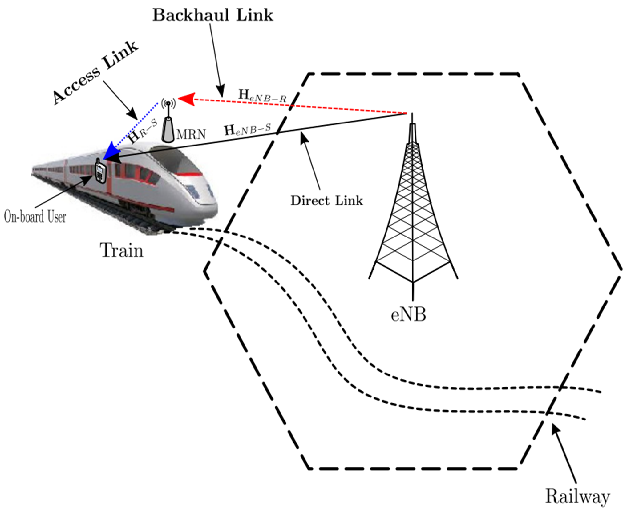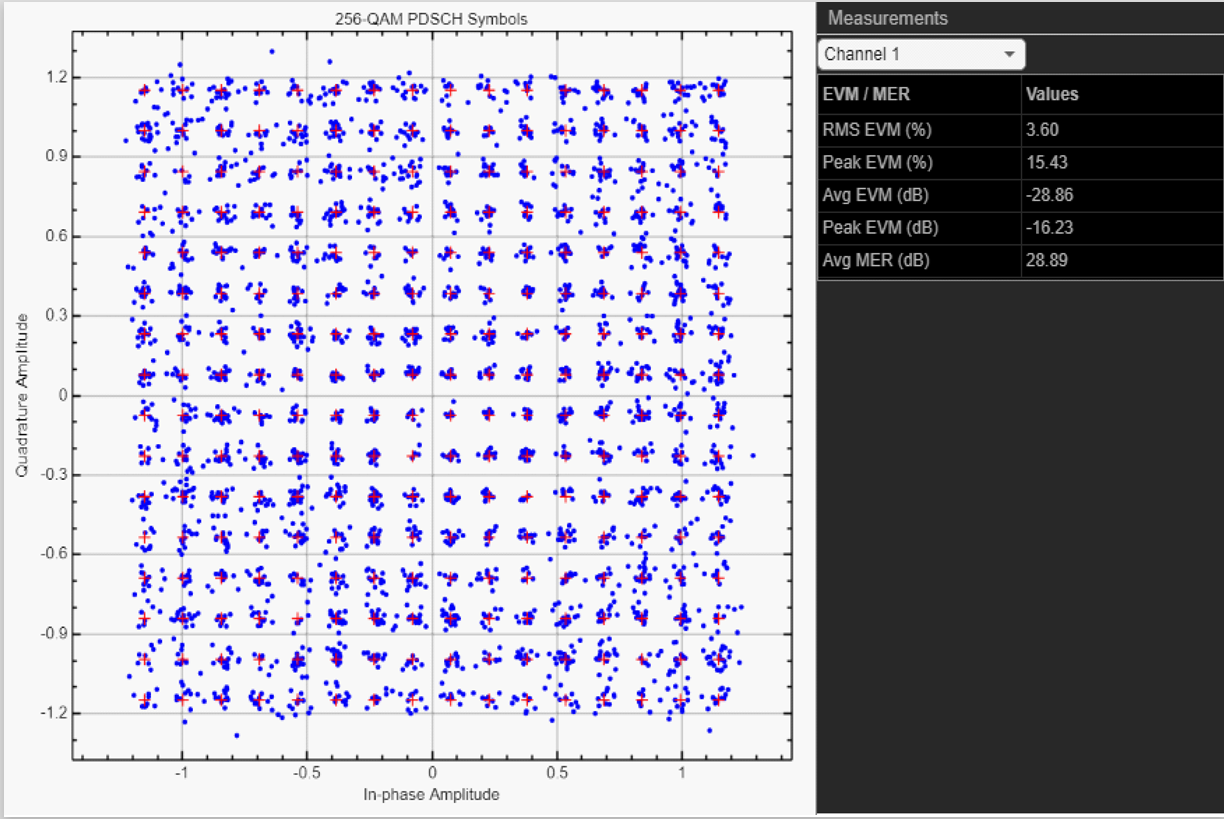Vehicle mobility in mmWaves
This pilot enhances 5G connectivity in high-density, high-speed transport by using innovative Relay Nodes for significantly improved overall service
The main objective of the mobility pilot is to address and respond to one of the primary limitations of current broadband connectivity solutions in mobility, as proposed in 5G. These solutions are not designed for certain modes of transport with a high density of vehicles or where vehicles move at a significant speed. The proposed network architecture is based on the use of Relay Nodes. In the two tests to be conducted in the mobility pilot, two types of Relay Nodes will be used: Amplify & Forward Layer 1 and Decode & Forward Layer 2. Both types of Relay Nodes can operate in-band or out-of-band, meaning the frequency of the input 5G signal can be the same as the output signal, typically in the FR1 band (<6GHz), or it can be different, with the input signal in the FR1 band (<6GHz) and the output signal in the millimeter-wave band (26 GHz). Based on these hypotheses, two types of mobility tests have been proposed.

The pilot for testing and measurements on a fleet of municipal buses aims to utilize the deployed commercial 5G network and assess improvements in data traffic and passenger quality of service by using the Decode & Forward Layer 2 in-band Repeater Node. In this setup, commercial 5G base stations would transmit on FR1 (3.5 GHz), and the Repeater Node would distribute the signal inside the bus to users on the same frequency. Additionally, this scenario involves working with 5G "small cells" that have base stations operating in the millimeter-wave band (26-28 GHz). An Amplify & Forward Layer 1 out-of-band Repeater Node would be used to distribute the radio channel signal, which operates in the 26-28 GHz range, inside the bus on the FR1 band (3.5 GHz).
A second variant of this scenario would involve distributing the millimeter-wave signal in the same frequency band as the backhaul link, allowing users to have mobile or portable terminals operating in these frequency bands.
The objective of performing tests and measurements in private vehicles is to conduct similar tests and demonstrations as in the previous scenario but using a private vehicle. This approach aims to study the throughput improvements for users inside the vehicles, enhance coverage and quality of service by addressing channel fading effects through cooperative diversity, and improve the robustness of transmission by ensuring reliable communication between the base station and the users.
Preliminary Results
A Two-Hop MIMO Relay Architecture Using LTE and Millimeter Wave Bands in High-Speed Trains
In this paper, a novel two-hop relay architecture using mobile relay nodes (MRN) technology for high-speed trains is presented. In this architecture, a long-term evolution advanced (LTE-A) link in sub-6 GHz bands is established between the Donor-eNB (DeNB) and the MRNs mounted on the roof of the train and another in millimeter Wave (mmWave) bands between the MRN and the user equipment (UE) terminals inside the train. Moreover, the multiple-input multiple-output (MIMO) channel is exploited between the DeNB and the UEs to enhance channel capacity. Different relay structures-several relays in a train carriage and a single relay with multiple antennas-and different types of relays-amplify-and-forward and decode-and-forward (DF)-are studied. Ultimately, performance analysis is studied and discussed by means of a downlink-level simulator with accurate channel models. Furthermore, multiuser transmission and conventional user scheduling algorithms are added to obtain a more realistic simulator. A new algorithm for one of the structures and the DF relay is proposed. This paper will examine how to provide broadband data access to train passengers in high-speed environments by validating a new architecture, which takes advantage of MIMO techniques, mobile relays, and millimeter bands.

Analysis of A&F Mobile Relay Nodes with Power Control and Link Selection in HSR Scenarios
In this paper, a theoretical study of the use of Amplify&Forward (A&F) Relay Nodes (RNs) with Power-Control- and-Link-Selection (PCLS), in a High-Speed-Railway (HSR) scenario is presented. The MRNs have been standardized by the 3GPP and is one of the proposed solutions to improve the Quality of Service (QoS) and the user’s throughput on vehicles in high mobility scenarios. Nevertheless, many items have not been investigated in depth until now, like transmission power control in the MRNs and link selection by on-board users. Under this hypothesis, firstly a Power-Control-and-Link-Selection (PCLS) algorithm is developed. In addition, the advantages of using Multiple-Input and Multiple-Output (MIMO) schemes, Resource Allocation (RA) together with Beamforming techniques have been analyzed. Numerical simulations indicate that the combination of PCLS with MIMO capacities and RA-Beamforming schemes in the MRNs substantially improves the throughput of on-board users and reduces the transmission power of MRNs.

A Flexible mmWave Layer 2 Protocol Implementation for Integrated Access and Backhaul Architecture
In this paper, we present a 3GPP-inspired hardware implementation for the out-of-band Integrated Access and Backhaul (IAB) network, which serves as a solution to both coverage extension and capacity boosting in 5G and beyond networks. By employing an Ettus x310 software-defined radio (SDR) board, Pasternack’s 60 GHz Transmitter (Tx) waveguide module, and Matlab TM software, we design and develop an easy-to-use out-of-band mmWave Layer 2 protocol. The proposed protocol decodes a frequency range 1 (FR1) 5G signal as input at 3.5 GHz, which is retransmitted to the UE as a frequency range 2 (FR2) 5G signal at 60 GHz. In the implementation of the Layer 2 protocol, the least squares (LS) estimator is adopted by considering the demodulation reference signal (DM-RS) and the channel state information reference signal (CSI-RS) as pilot symbols in real-world environments. To alleviate the performance degradation in the mmWave access link, a phase noise cancellation (PNC) algorithm based on the phase tracking reference signal (PT-RS) is implemented at the UE node where a PT-RS block structure is introduced in the mmWave Layer 2 protocol transmitter stage. We review and evaluate the key performance indicators (KPIs) of the proposed Layer 2 protocol in real non-line-of-sight (NLOS) environments and a comparison between the gNode-to-UE link is carried out. Our results indicate that the performance of the proposed Layer 2 protocol is similar to the obtained with the off-the-shelf equipment demonstrating the right functionality of the developed algorithms. Experimental results evidence the superiority of the proposed Layer 2 protocol over the gNodeB-to-UE link (direct link communication) and the best performance is obtained when the PNC algorithm is considered in the IAB architecture.

